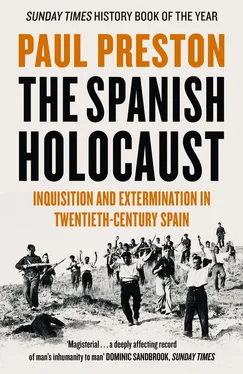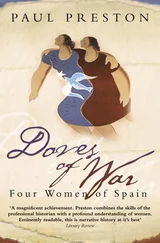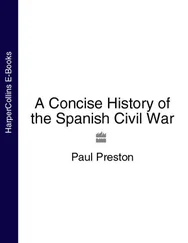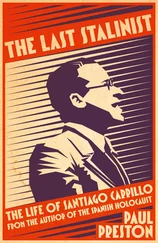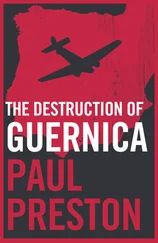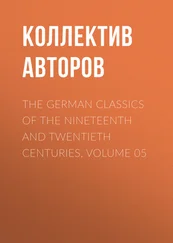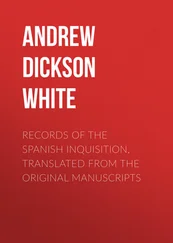As his early preparations made with Bedia and Valdivia revealed, conciliation had not been uppermost in Salazar Alonso’s mind. His measures were now swift and ruthless to weaken the left in advance of the conflict. Workers’ leaders were rounded up before the strike had started. Other liberal and left-wing individuals in the country districts were arrested wholesale. On 31 May, José González Barrero, the recently removed Mayor of Zafra, was arrested on trumped-up charges. The Mayors of Olivenza and Llerena, also in Badajoz, were likewise arrested, as were numerous union officials, schoolteachers and lawyers, some of whom were beaten or tortured. Salazar Alonso had effectively militarized the landworkers when he had declared the harvest a national public service. Strikers were thus mutineers and were arrested in their thousands. Even four Socialist deputies, including Cayetano Bolívar, visiting prisoners in Jaén, were detained – in violation of the Constitution. 56
In the prison of Badajoz, with a normal capacity of eighty prisoners, six hundred were held in appalling conditions. There was similar overcrowding in the prisons of Almendralejo, Don Benito and other towns in the province. In addition to those arrested, several thousand peasants were simply loaded at gunpoint on to cattle trucks and deported hundreds of miles away from their homes and then left to make their own way back penniless and on foot. On 4 July, two hundred starving peasants from Badajoz who had been imprisoned in Burgos reached Madrid and congregated in the Puerta del Sol where they were violently dispersed by the police. The FNTT paid for them to return home, where many were rearrested. 57
Workers’ centres were closed down and many town councils, especially in Badajoz and Cáceres, were removed, and the Mayor and councillors replaced by government nominees. The strike seems to have been almost complete in Jaén, Granada, Ciudad Real, Badajoz and Cáceres, and substantial elsewhere in the south. In Jaén and Badajoz, there were violent clashes in many villages between strikers and the permanent workers, the armed guards of the large estates and the Civil Guard. However, neither there nor in other less conflictive provinces could the strikers stop the owners drafting in outside labour, with Civil Guard protection, from Portugal, Galicia and elsewhere. The army was brought in to use threshing machines and the harvest was collected without serious interruption. The CNT did not join in the strike, which limited its impact in Seville and Córdoba although that did not protect anarchist workers from the subsequent repression. Although most of the labourers arrested on charges of sedition were released by the end of August, emergency courts sentenced prominent workers’ leaders, including González Barrero, to four or more years of imprisonment. 58
The Casas del Pueblo were not reopened and the FNTT was effectively crippled until 1936. In an uneven battle, the FNTT had suffered a terrible defeat. In several provinces, the remaining Socialist town councils were overturned and replaced by the caciques’ nominees. In Granada, the Civil Governor was removed at the behest of local landowners because he had made an effort to ensure that the remaining labour legislation was implemented after the strike. 59In the Spanish countryside, the clock had effectively been put back to the 1920s by Salazar Alonso. There were no longer any rural unions, social legislation or municipal authorities to challenge the dominance of the caciques. The CEDA was delighted. 60
By choosing to regard a strike of limited material objectives as revolutionary, Salazar Alonso was able to justify his attack on Socialist councils. As has already been noted, he claimed that, by the end of the conflict, he had removed only 193 of them. However, the real figures were much higher. In Granada alone, during the period that the Radicals were in power, 127 were removed. In Badajoz, the figure was nearer 150. 61By his aggressively brutal action during the peasant strike, the Minister of the Interior had inflicted a terrible blow on the largest union within the UGT and left a festering legacy of hatred in the south. Local landowners were quick to reimpose more or less feudal conditions on workers whom they regarded as serfs. Wages were slashed and work given only to non-union workers regarded as ‘loyal’.
Shortly after entering the Ministry of the Interior, Salazar Alonso had crushed strikes in the metal, building and newspaper industries on the grounds that they were political. He had done so despite pleas from labour leaders that all these disputes had social and economic origins and were not meant to be revolutionary. 62In the summer of 1934, he had managed to escalate the harvest strike and smash the FNTT. Despite his success, Salazar Alonso was still some way from his long-term goal of destroying any and all elements that he considered to be a challenge to the government.
This was clear from a letter that he wrote to his lover Amparo at the end of July:
You can imagine what I’m going through. It could be said that this is the beginning of a revolutionary movement much more serious than the more frivolous might think. Conscious of the enormous responsibilities I bear, I am totally dedicated to the task of crushing it. It’s true that the campaign against me is building up. There are wall slogans saying ‘Salazar Alonso just like Dollfuss’ [the Austrian Chancellor who had repressed a revolutionary strike in Vienna in February]. The extremist press attacks and insults me, calls for me to be assassinated. I’m calmer than ever. I work ceaselessly. I’m organizing things. Today I had meetings with the Chief of Police, the Director General of Security, the head of the Assault Guard, and the Inspector General of the Civil Guard. I’m preparing everything carefully, technically just like the officer in charge of a General Staff. Needless to say, I don’t sleep. Even in bed I continue to plan my anti-revolutionary organization. Public opinion is turning in my favour. People believe in me, they turn to my puny figure and they see the man of providence who can save them. 63
Salazar Alonso referred to Amparo as his muse and to himself as the chieftain, using the word later adopted by Franco, ‘Caudillo’. He painted for her the self-portrait of a brilliant general about to go into battle against a powerful enemy. However, the nearest that Largo Caballero’s PSOE–UGT–FJS liaison committee had come to creating militias was to make a file-card index of the names of men who might be prepared to ‘take to the streets’. The lack of central co-ordination was demonstrated by Largo Caballero’s acquiescence in the erosion of the trade union movement’s strength in one disastrous strike after another. Young Socialists took part in Sunday excursions to practise military manoeuvres in the park outside Madrid, the Casa del Campo, armed with more enthusiasm than weapons, activities easily controlled by the police. Desultory forays into the arms market had seen the Socialists lose their scarce funds to unscrupulous arms-dealers and had produced only a few guns. The police were fully informed about the purchases, either by spies or by the arms-dealers themselves, and often arrived at Casas del Pueblo and Socialists’ homes with precise information about weapons hidden behind false walls, under floorboards or in wells. The one attempt at a major arms purchase, carried out by Indalecio Prieto, was a farcical failure. Only in the northern mining region of Asturias, where small arms were pilfered from local factories and dynamite from the mines, did the working class have significant weaponry. 64
On 10 June, while the peasants’ strike was taking place in the south, Ansaldo’s Falangist terror squads were involved in violent incidents in Madrid. They attacked a Sunday excursion of the Socialist Youth in El Pardo outside the capital. In the subsequent fight, a young Falangist was killed. Without waiting for authorization from José Antonio, Ansaldo requisitioned the car of Alfonso Merry del Val and set off to retaliate. Opening fire on other young Socialists returning to Madrid, they killed Juanita Rico and seriously wounded two others. 65Margarita Nelken accused Salazar Alonso of covering up the Juanita Rico murder, and that of another Socialist, in the knowledge that they were carried out by Falangist terror squads. 66Throughout the summer, Ansaldo was planning to blow up the Socialist headquarters in Madrid. Fifty kilos of dynamite was stolen and a tunnel dug from the sewers into the basement of the Casa del Pueblo. Ansaldo’s men murdered one of their squad suspected of being a police informer. Before the explosive device was ready, on 10 July, the police discovered large quantities of guns, ammunition, dynamite and bombs at the Falange headquarters. Eighty militants, mainly Jonsistas and Ansaldo’s men, were detained, but only for three weeks. 67Although José Antonio formally expelled Ansaldo in July, the hit squads continued to carry out reprisals against the left with equal frequency and efficiency. In fact, Ansaldo went on working with them.
Читать дальше
